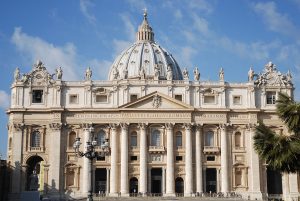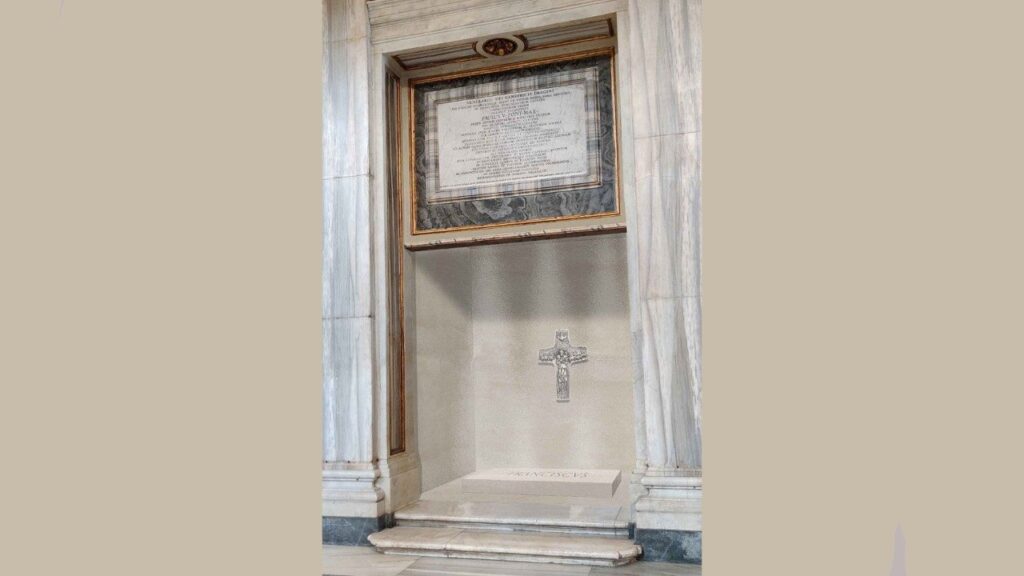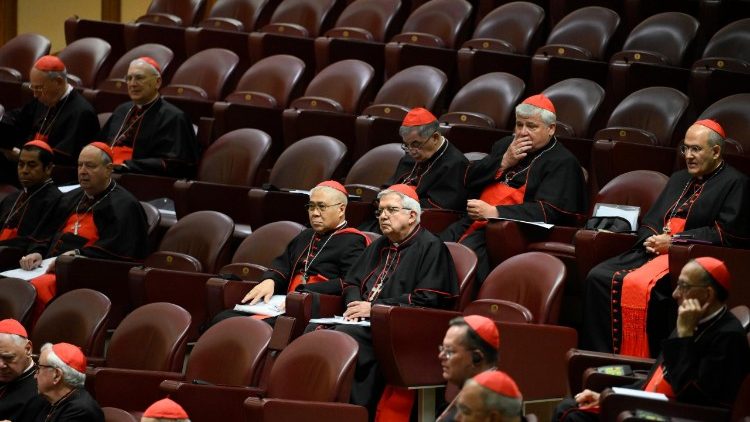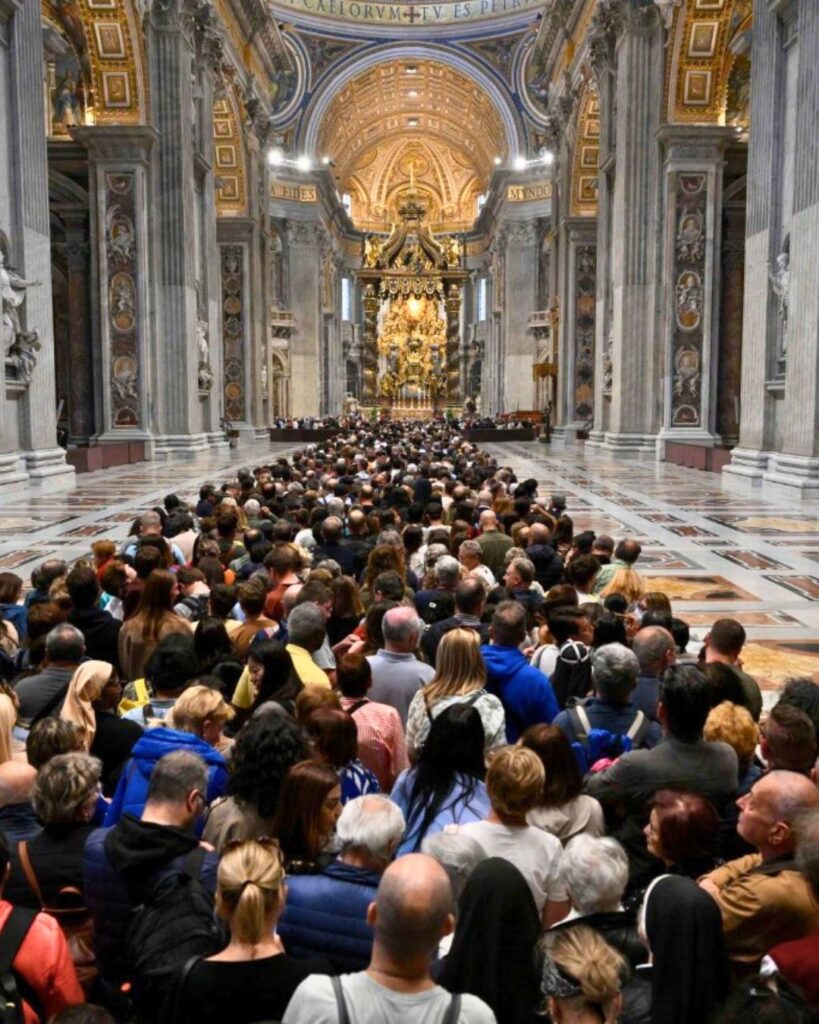2020: A Difficult Year for Holy See Finances
Prefect of the Secretariat for the Economy Says Results Better than Expected

Last year was a difficult one. It forced Vatican dicasteries to reduce spending. Yet, in the end, in comparison with past years, less money from Peter’s Pence was used to subsidize the services of these dicasteries who participate in the Pope’s mission. Thus, more aid went to Churches in countries affected by the pandemic. The Holy See’s consolidated balance sheet demonstrates this, as attested to by Father Juan Antonio Guerrero Alves, Prefect of the Secretariat for the Economy in this interview, published July 24, 2021, in Vatican News.
First of all, with consolidated financial statements in hand, what can you say in the end about 2020, the year characterized by the pandemic?
In short, better than what we expected. I cannot say it was a good year. But given the circumstances, I can say that the part of 2020 before the pandemic, we had projected a budget deficit of €53 million. When Covid hit, the deficit we projected in the best-case scenario was around €68 million; in the worst-case scenario, we projected €146 million. The middle-case scenario projected a €97 million deficit. So, we revised the budget in March, approving a deficit of €82 million.
The end result, instead, with a deficit of €66.3 million, was slightly better than the projected best-case scenario, and decisively better than what we had projected in the revised budget in March. The good news is that thanks to the efforts made, the results are very close to those of a normal year. The ordinary deficit is €14.4 million less than the 2019 deficit: €64.8 million in 2020, compared to €79.2 million in 2019. Without doubt, this is an improvement. Nevertheless, the return on financial investments was down by €51.8 million and the extraordinary profit was down by €17.8 million.
What does this mean?
It means that last year’s deficit was €11.1 million and this year’s is €66.3 million. But I must recall that this represents solely the Holy See’s balance sheet. There are also those related to the Governorate, IOR, and many other entities of varying types and sizes connected with the Holy See. Among these are hospitals, foundations, the Vatican Pension Fund, the Health Care Fund, etc., whose obligations and risks affect the Holy See. When we presented last year’s budget, we did it within this context of having a more general vision. If we had put all these entities together, the picture would have been a little worse: the current actuarial deficit will weigh on the Holy See for the next 100 years. So too, the Health Care Fund has its “actuarial deficit”. The entities making up the Holy See are not-for-profit. Many tend to operate in the red because they provide services that are not completely funded. Important work needs to be done to improve sustainability.
What is behind the fact that the best-case scenario was achieved?
The dicasteries reacted responsibly in spending and revenue fell less than projected. Spending was reduced. Expenses apparently decreased slightly between 2019 (€318 million) and 2020 (€314.7 million), a reduction of only €3.3 million. But if we were to eliminate financial charges, extremely high this year due to variations in the exchange rate, we see that ordinary expenses fell by almost €26 million. Expenses would have even been lower had it not been for the extraordinary expense of €6.7 million related to Covid, and another €3.5 million included under ordinary expenses.
A nice gesture on the part of some dicasteries connected to Churches truly in need of help is that by reducing expenses in many areas, they were able to increase their contributions to cover the needs of these Churches caused by the pandemic, at times, decreasing their assets, as in the case of the Dicastery for Promoting Integral Human Development.
Regarding revenue, we had estimated €269 million prior to Covid. Revenue totaled €248.4 million. Our projection was based on the thought that income was going to decrease more. Instead, ordinary revenue fell by €11.4 million, or 5%. Most of the revenue came in prior to Covid. So, we are waiting to see if this trend continues in 2021.
Does this year’s balance sheet demonstrate less of a necessity to dip into Peter’s Pence? Can you provide some numbers regarding the past?
In recent years, contributions to Peter’s Pence for the Holy Father’s mission have been: €52 million in 2017; €74 million in 2018; €66 million in 2019; €50 million in 2020. In 2019, Peter’s Pence subsidized 32% of the dicasteries’ mission expenses (€66 million out of €207 million non-administrative expenses). In 2020, it financed 24% (€50 of €207 million). What explains the difference regarding the year before is that an increase or decrease in the value of financial investments, revenue, or expenditures due to differences in exchange rates are normally unrealized revenue or expenditures. In other words, they appear on the books but they do not need to be paid and do not affect liquidity. This shows up in those dicasteries with more investments, who use the profit to finance a portion of the Holy See’s mission. For their part, these dicasteries, were able to contribute more money this year toward the mission expenses of those dicasteries financed by Peter’s Pence, reducing the necessity to dip into that fund. Peter’s Pence collected €44 million and contributed €50 million toward the Holy Father’s mission in 2020, in addition to the €12 million in direct disbursements to specific projects in various countries. It spent €18 million more than what it collected, drawing from previous assets.
How has the crisis affected revenue?
The entities included on the balance sheet presented here vary greatly in size. Nine dicasteries account for 95% of the Holy See’s entire revenue and spend 80%. Sources of revenue already known are: 58% (68% in 2019) generated internally (rent payments, investments, visitors, and services rendered); 23% (18% in 2019) external donations (from dioceses or various other institutions); and the third source, 19% (14% in 2019) come from related entities (such as IOR or the Governorate). Total revenue decreased by €58.5 million (19%) all of which is attributed to the loss of internally generated revenue dependent on visitors and the general economic situation.
Donations, both those given directly or those that come from dioceses throughout the world, remained practically unchanged, going from €55.8 million in 2019 to €56.2 million in 2020. It seems that the pandemic and other scandals that hit the front pages did not considerably influence donations, or is it still too soon to tell?
I do not think that it can be exemplified like that. Conclusions should never be hastily drawn. In any case, we must learn a lesson both from the scandals and from the pandemic.
What lesson?
There is a message the Pope repeats: from this crisis provoked by the pandemic, we can become better or worse. I think the pandemic helped the dicasteries become aware of their own weaknesses and to identify areas needing improvement and to take a few positive steps forward on the path of reform. As far as expenses are concerned, at the beginning of the pandemic, it was decided to maintain only essentials: salaries, aid to the Churches in difficulty, and to the poor. The rest we cut as much as possible. A strategic analysis of expenses was done and some items were frozen. We observed weakness regarding decision-making. This has forced the entities responsible for financial affairs to work together in a more coordinated way. Faced with the difficulty of obtaining economic information from the entities, we are working on an information system to centralize and access data quicker and at a lower cost for all the entities. A new list of entities that incorporates the Pope’s Motu proprio of 26 December 2020 on economic matters was approved in a recent meeting of the Council for the Economy. A new aggregation perimeter in the budget will allow the risks the Holy See faces to be more visible, so they can be addressed, as well as a list of entities that must centralize their investments through APSA.
As far as numbers go, it is true that specific projects financed by various donors (€33 million), and the contributions from the dioceses to the Holy See (€23 million) are similar to 2019. But it must also be said that the Peter’s Pence collection, that till now had been included in the Holy See’s consolidated balance sheet, has been decreasing over the last years. It fell by 23% between 2015 and 2019 and, in the first year marked by Covid, in 2020, by 18%. In 2019, €53.86 million was collected, and €44 million in 2020. At the same time, it is fairly possible that there is a time-lapse between the time the collection is taken and when it arrives in the Holy See, that is, the 2019 collection may have arrived in the Holy See 2020, so we will be able to assess the impact of the pandemic with 2021’s balance sheet. In any case, I hope that the steps that are being taken in the direction toward better management, more efficient oversight, and greater transparency will help restore credibility.
Speaking about the lessons learned from the pandemic, an important case is about to be processed in the Vatican. What are the lessons that can be learned from what happened?
The Holy See’s economy is not important for its volume or its content. What is important, and what should be spoken of, is its mission, the service it offers to the Church and the world. When it is necessary to speak of the Holy See’s economy, it is usually because something has not worked as it should have. This, then, undermines the credibility of its mission. It should be enough to talk about it once or twice a year when the budget and the balance sheet are presented. I think this specific case in this process marks a turning point that can lead toward greater credibility regarding the Holy See’s financial affairs. First of all, this process speaks about a past, a recent past, but about the past. Mistakes can always happen. But today I do not see how past events can be repeated.
Secondly, the fact that this process is happening means that some internal controls worked: the accusations surfaced within the Vatican. For several years, the measures adopted have been going in the right direction. Already when Pope Benedict established AIF (today ASIF), and Pope Francis continued in the same direction, creating the Council for the Economy in 2014, the Secretariat for the Economy, and the Auditor General’s office. The Pope’s recent Motu proprios on economic matters have made the Vatican’s economy more transparent. Moneyval recently recognized the effective progress made, as did Dr. Barbagallo in his recent interview. We are still on the road. We know that laws alone are not sufficient, that they must be implemented and they must be respected until a new culture is created. In this sense, thanks to this process, independently of its success, we have learned and we are learning. We can always make mistakes. But today, it would be very difficult that what happened in the past be repeated.
Can you give an example of what you have learned?
It is very important for us to have good consultants since we are not focused on economic activity and since we have made mistakes in the past, as can be seen. The selection of consultants has improved as well as the level of professionality in the dicasteries and entities that deal with economic matters within the Holy See. We are coming from a culture of secrecy, but in economics, we have learned that transparency protects us more than secrecy does. We have also understood that we are guardians, not owners, and guardians must be accountable. This culture has begun to change. Many now understand that checks and balances and accountability do not mean distrust, but self-protection and support for what is done, because it also prevents mistakes.
Going back to the numbers, ordinary operating expenses have decreased from €306.5 million in 2019 to €280.7 million in 2020. Where were savings made?
Compared to 2019, we have reduced all expenditure items to varying degrees. We reduced travel and events expenses the most (€6.2 million, 75% less than the previous year). Another item improperly called “commercial” was reduced by €4.9 million. A lot of maintenance work was postponed, resulting in a reduction in costs of €4.6 million. The nunciatures also tightened their belts and reduced their expenditures by €4 million, and the same happened to consultancy services, which were reduced by €1.6 million, bringing them to 19% less than the previous year. The only expenditure item that did not decrease was taxes, which amounted to almost the same as last year: €18.8 million
In your opinion, have all the expenses been cut that can be cut, or can more be done?
We have done what could be done by addressing the unforeseen problems that arose with COVID, which revealed some weaknesses. We could save a little more with consulting if we were to make strategic contracts for some professionals. Some administrative aspects are duplicated, the elimination of which would lead, if not to short term, at least to medium term, savings. I am not saying anything new here. These are issues that have been discussed for years, but which have not yet been addressed. I am thinking, for example, of IT, which is managed in several centers when a single center would cost less. The same applies to administration: we could save money if we had one accounting office instead of several different ones.
All of us who serve in the Holy See and its related institutions have been asked to make sacrifices, to reduce, or at least not increase salaries. The aspect regarding personnel has been contained this year. To ensure economic sustainability, while maintaining the Pope’s rightful decision not to lay anyone off, and to generate greater motivation among employees, it would be useful to make a long-term plan and to have a labor policy that includes professional development and training, with a focus on formation in the mission that the Holy See carries out. This would also save money in the long run.
With this consolidated budget, has the Holy See fulfilled all its commitments to its mission?
I do not believe anything essential for the Holy See’s mission has been neglected. There has been enough creativity to be able to continue to meet the needs of the mission. Papal travel was greatly reduced, but the Holy Father has found effective ways to be present in the life of the Church and the world. It is true that the dicasteries most affected are the ones that organize international meetings, conferences, and gatherings to carry out their mission, but there have been many online congresses, webinars, zoom meetings, and so on. We have most likely learned a way of working that is complementary to our usual way of working. Time will tell to what extent COVID has changed our way of working, celebrating, and being together.
Also, as I said before, COVID has given us the possibility of being able to provide additional help at a difficult moment for all humanity, thus making the Church present in areas with fewer resources to deal with the pandemic. The economic situation was worse, but the mission expanded. This is further proof that the criteria driving the Church are not economic.
In which areas were the results more worrying than in the past? If you can, please provide numbers.
The most affected were those that carry out economic activity. For example, the area that, as I mentioned earlier, was erroneously classified as “commercial”, which includes the Museums that fall under the Holy See and the catacombs, which have been closed for a long time, or the travel office linked to APSA, which has not had much work this year. This meant a reduction in revenue of €11.6 million euro and a reduction in expenses of €4.9 million, i.e. a net reduction of €6.7 million euro. Real estate income decreased a little, but less than expected. The loss was about €5 million and another €5 million delayed payments. Financial investments were also worse than last year, which was a good year. Revenue was down €32.1 million and expenses were up by €19.7 million (due to exchange rates and the depreciation of the market value of assets). In other words, the result was €51.8 million worse than last year. The pandemic showed us some weaknesses that have no apparent economic cost. In situations like the one we have experienced and are currently experiencing, it is essential to have immediate financial information in order to make the most appropriate decisions. For us, obtaining financial information is expensive and requires time.
What was behind the decision to maintain as much liquidity as possible, at the expense of long-term investments? What results did this strategy have?
This is a consequence of the difficulty of obtaining financial information. The uncertainty brought on by the pandemic made us maintain as many liquid assets as possible. Some were predicting that the stock market would fall. In that case, we would have had to sell at a loss. Aware of our cash flow, we preferred to hang on to liquid assets, so as not to be forced to sell in the event of a negative situation. We did not have precise information regarding the liquid assets at our disposal. This is what determined the decision to increase liquidity, and it meant a reduction in our financial profit at the same time. I think this was the most prudent thing to do given the situation we were in.
Has the transition the Pope initiated to put the management of the Secretariat of State’s funds under APSA taken place? Can you confirm that this reform is already operational?
Absolutely, yes. The funds are in APSA (Apostolic Patrimony of the Holy See), they are managed by APSA and they already form part of the Holy See’s ordinary budget. Preparations are underway for the sale of the property in London as well as legal action against those we believe have harmed the interests of the Holy See.
We are continuing a process begun in the Secretariat of State before the funds were transferred to APSA’s management. Next year all these funds will be on the balance sheet and we will provide an accounting of the income and expenditures related to Peter’s Pence. We are aware that the speed with which a law is made, the speed with which it is put into act and the speed with which customs and cultures change vary greatly. Sometimes it takes intelligence, sometimes it takes willpower and sometimes it takes patience.
How will investments be made in the future?
The Council for the Economy is developing an investment policy. In 2020, a group worked on designing a committee for this purpose. While these general policies are being outlined and implemented, IOR has already updated and renewed its investment team and APSA is introducing new, more efficient, and transparent real estate and securities investment policies.
Based on this financial assessment and current difficulties, what does the short and medium-term future look like for the Holy See?
The trend in recent years has been a decrease in revenue and a decrease in spending, although to a lesser extent than revenue. We can expect one type of income to yield more revenue when activities are resumed completely. I am referring to services relating to visitors, and commercial rents. If economic activity picks up, both the Governorate and IOR will be able to maintain and perhaps increase their level of contributions to the budget. Cost containment alone is not a reliable solution. It is easily foreseeable that expenses will also increase once activities resume, with travel, conferences, etc., although perhaps we have learned something from this period. On the other hand, we must continue to insist on improving the profitability of movable and immovable investments. And there is room for this. We are working in that direction.
What do you expect for the future?
We do not know what the future will be like. That belongs to God and we can only look to the future with hope. We do not yet know how the pandemic will develop. Just when we think it is about to diminish or disappear, news comes that the number of infected people is increasing. However, it seems to be losing its initial severity and there seems to be no risk of a new health care system collapse. We do not know how the pandemic has changed or how it will change the way we work, celebrate, and spend time together. We do not know how it will change the Christian community. We do know, however, that for a few years now, all the steps taken by the Holy See in the economic area have been moving in the right direction: consistent with its social doctrine, transparency, oversight, efficiency… Life always paves the way, and we will find a way to move forward, with the Lord’s help.
This is a working translation from the Spanish original.

2020 Consolidated financial statement
Related

Thousands of faithful bid farewell to Pope Francis in St. Peter’s Square
Exaudi Staff
26 April, 2025
2 min

Francis’s Tomb: A Legacy of Humility and Closeness
Exaudi Staff
25 April, 2025
4 min

Cardinals Intensify Their Spiritual and Pastoral Preparation at the Third General Congregation
Exaudi Staff
24 April, 2025
1 min

Rome unites in prayer: the world bids farewell to Pope Francis with love and gratitude
Exaudi Staff
24 April, 2025
2 min
 (EN)
(EN)
 (ES)
(ES)
 (IT)
(IT)

